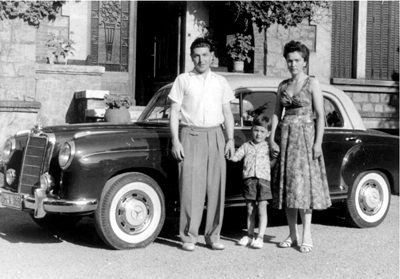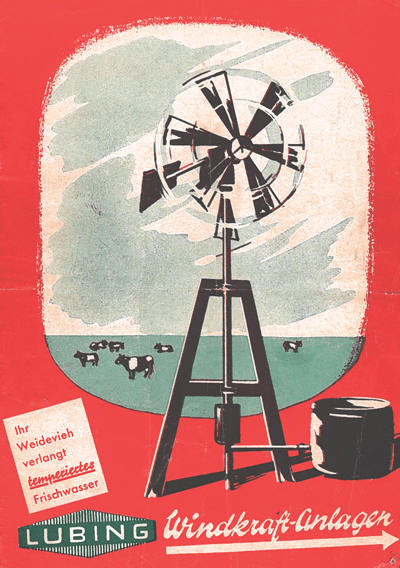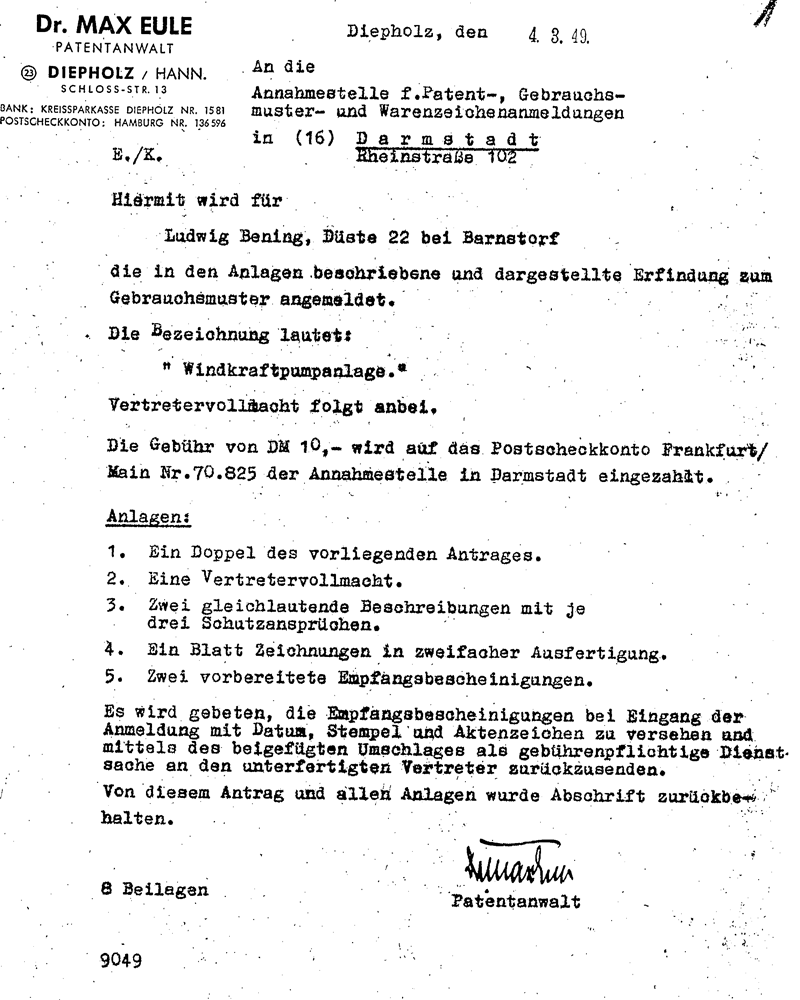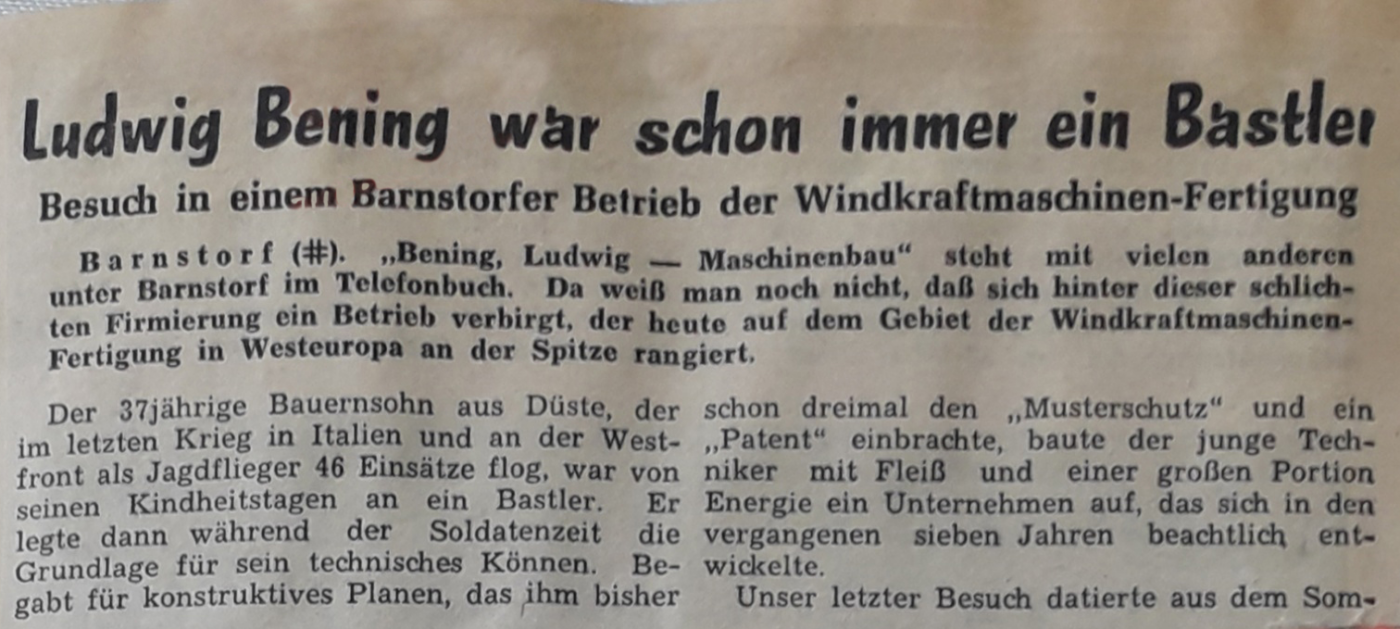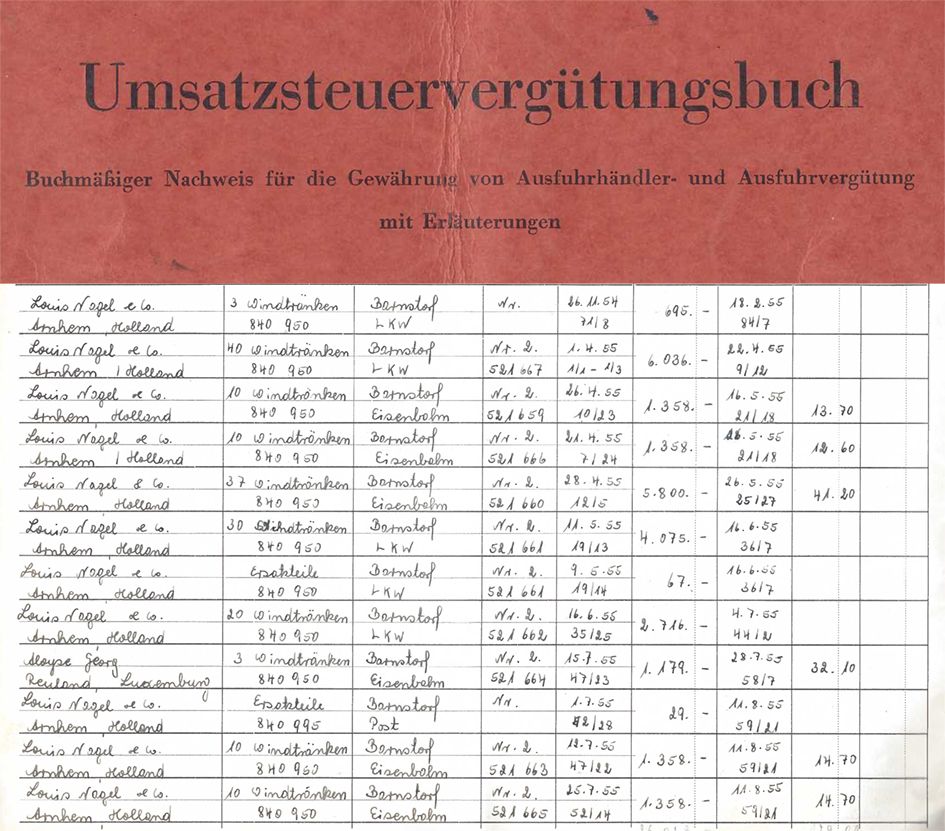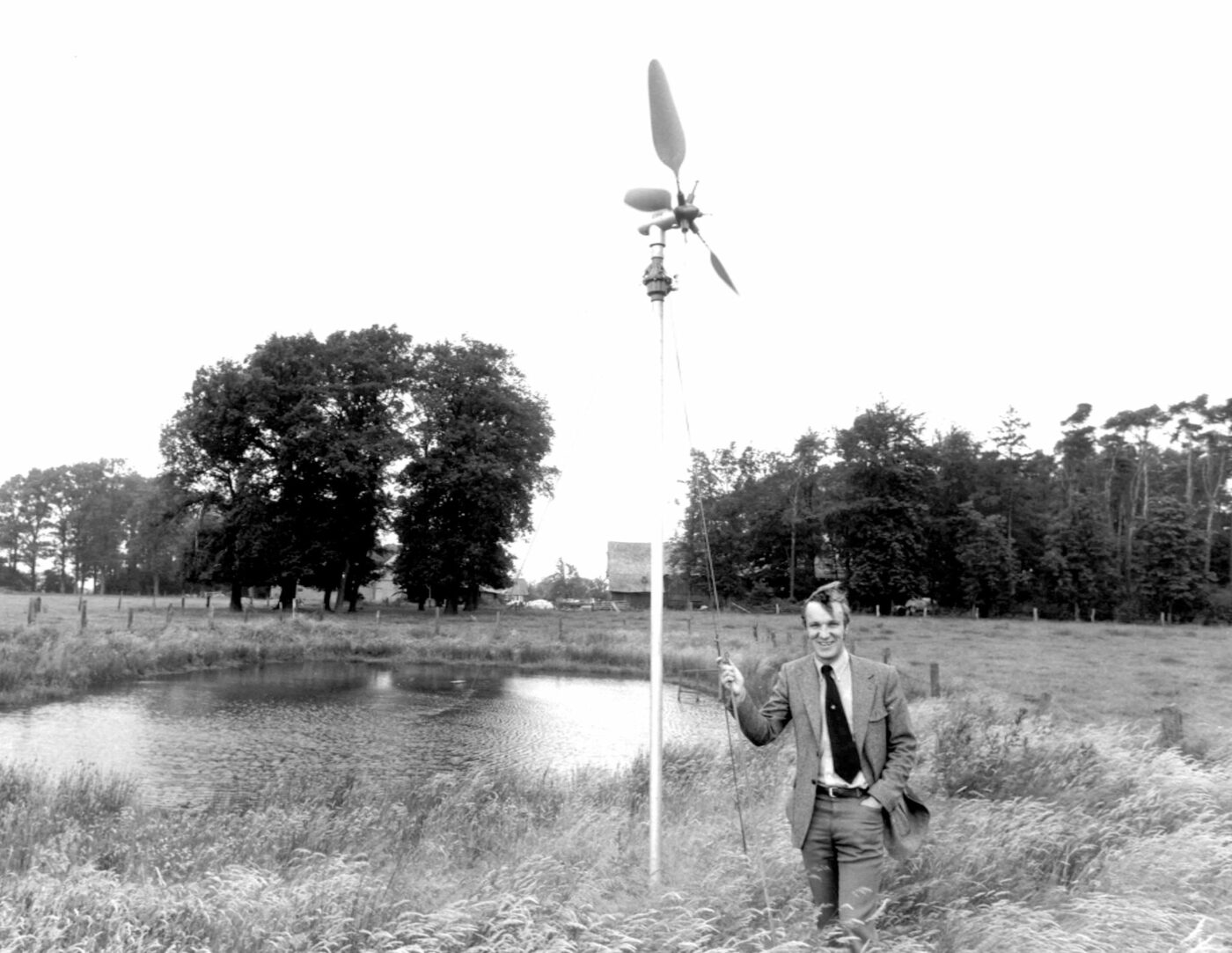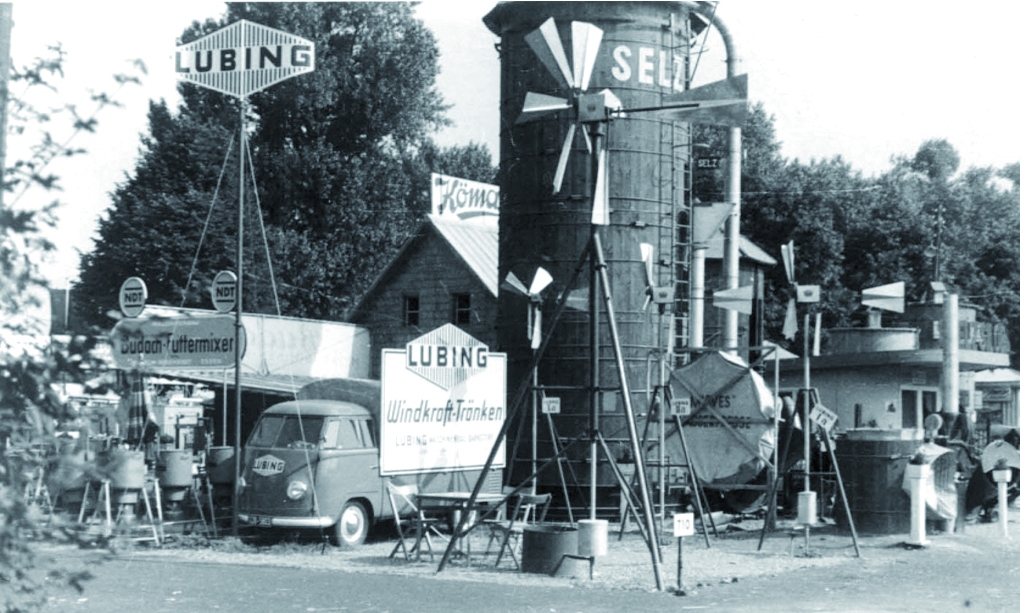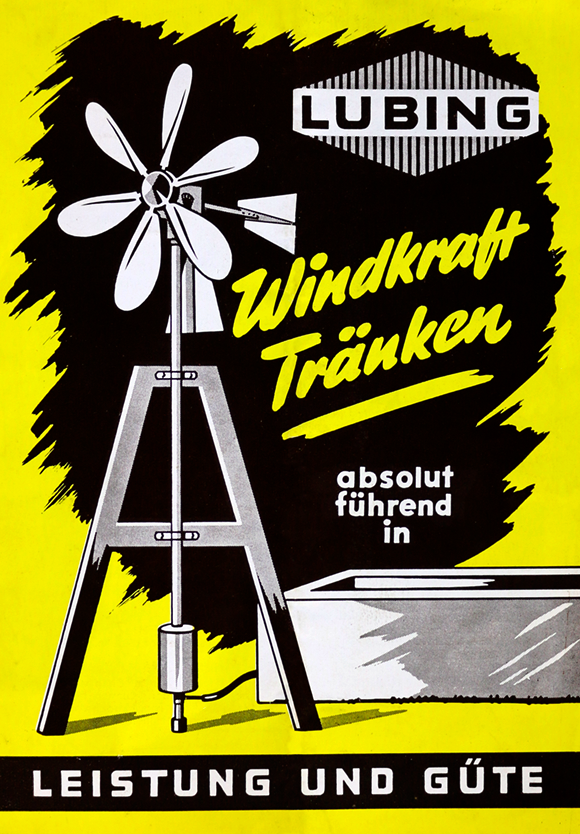LUBING turns 75 - a year to celebrate!
Ludwig Bening founded LUBING in May 1949 – so 2024 is the year of our 75th company anniversary.
At this point, we would like to take a look into the past with you and reveal, piece by piece, how the exciting LUBING story began. In each month of the anniversary year 2024, we will decipher and reveal a piece of LUBING history with a photo from the early days of the company. So it’s worth checking back here often! Over time, the individual contributions will result in a small LUBING story, which will also be available as an anniversary brochure during the anniversary year.
Ludwig Bening with his wife and child after the first successful years of business.
Part 1: How it all began.
Like so many other children of his generation, the war robbed Ludwig Bening of his future even before it had begun: drafted as a recruit at the age of 18 without any higher education, he spent his youth on the front lines of a senseless war.
He returns home in 1945 to a destroyed, hopeless country.
But the young man, who had to grow up so quickly, reclaims his world and begins to work on what he recognises as the greatest opportunity: establishing a functioning agriculture that can feed the local people again.
His ideas are new, technically adept and ambitious and solve pressing issues of our time – so he decides to put all his eggs in one basket.
Title page of the first advertising brochure for the patented LUBING wind turbines.
Foundation
In May 1949, before the currency reform, he founded Ludwig Bening Maschinenbau, LUBING for short (a combination of his first name and surname, the company was not renamed LUBING Maschinenfabrik until 1968).
The purpose of the company was to manufacture wind-powered pumps for use in pastures. The drive for technical optimisation, which has characterised the history of the company to this day, is already evident in them: LUBING wind turbines are equipped with a storm protection system developed in-house, which works on a purely mechanical basis and automatically turns the wheel out of the wind in strong storms to prevent damage.
His success proves him right: from three employees when it was founded, the company grows to almost 20 employees within eight years and continuously expands its business areas.
The successful patent application for the innovative “wind power pumping system” – filed before the company was founded and paid for with DM 10.
Part 2: Inventor years before the German economic miracle
Within a few years, Ludwig Bening succeeds in building up a flourishing company: from the first workshop on his father’s farm in Düste, production moves to Rechterner Straße in 1950, where Ludwig Bening erects a production building that also provides a home for him and his young family on the upper floor.
The small company is barely able to meet the demand for the innovative wind turbines and continues to optimise the product: using the then new material polystyrene instead of metal, it manufactures its own blades, thereby significantly increasing aerodynamics and efficiency.
The first residential and company building on Rechterner street in the mid-50s
Bold investments
Der Erfindergeist Ludwig Benings bricht sich auch auf anderen Gebieten Bahn: Öltanks und wirkungsstarke Warmwasser- und -luftheizungen, weitere Pumpen sowie ein Kartoffelroder werden in kürzester Zeit entwickelt und z.T. nach kurzer Produktionsdauer wieder verworfen. Erfolgreich hingegen ist die neu entwickelte Dickstoff-Kreiselpumpe – ebenfalls eine Erfindung des „Bastlers“ Ludwig Bening – so nennt ihn die lokale Tageszeitung, die seinen erfolgreichen Weg interessiert begleitet.
The now ten-strong team, which also repairs motor vehicles on the side, significantly expands capacity, but no longer fits into the small business premises. Ludwig Bening bravely allows himself to build a new home for himself and his young family next to the company building; the former flat becomes the company’s office. At the same time, a new production hall is built, which can start operations in 1955.
Newspaper clipping from the Diepholzer Kreisblatt
from the year 1957
Success proves Ludwig Bening right
But by 1958, with 30 employees, the next expansion becomes necessary. By the beginning of the 1960s, the number of employees had risen to 35. LUBING has increased its productivity by a factor of 50 in just under 10 years. The average wage of a locksmith has roughly doubled in the same period: from DM 1.20 to around DM 2.50 – per hour.
A look at the “export list” of LUBING’s VAT refund book.
Part 3: Years of consolidation
At the beginning of the 1960s, the now rapidly growing Ludwig Benings company sheds unprofitable product areas – such as oil heaters and tanks – and takes on a new employee who would shape the company’s fortunes until after the turn of the millennium: Egon Schumacher is hired as an engineer on 1 September 1964 after completing his mechanical engineering studies. His starting salary was DM 800 per month.
As he still had to complete his military service, he left the company two years later for 18 months and returned to a changed company in 1968.
The company’s main production area in the 1960s is optimised wind power pumps and systems, which find a stable customer base almost worldwide. 27 employees work at LUBING in 1964.
The newly hired engineer Egon Schumacher in front of a LUBING wind turbine
LUBING presents its wind turbines
A new business division
In the meantime, a fateful encounter takes place: Ludwig Bening meets Josef Meerpohl, the sales representative of the Dutch-American company Big Dutchman, which he would later take over. The two committed entrepreneurs immediately hit it off and recognised each other’s potential. Josef Meerpohl is looking for a manufacturer of drinking valves that can be used in chicken feeders. Ludwig Bening is always on the lookout for a good new idea – and invention. An agreement is reached – on the astronomical figure of 500,000 valves ordered. Per year!
The company’s main production area in the 1960s is optimised wind power pumps and systems, which find a stable customer base almost worldwide. 27 employees work at LUBING in 1964.
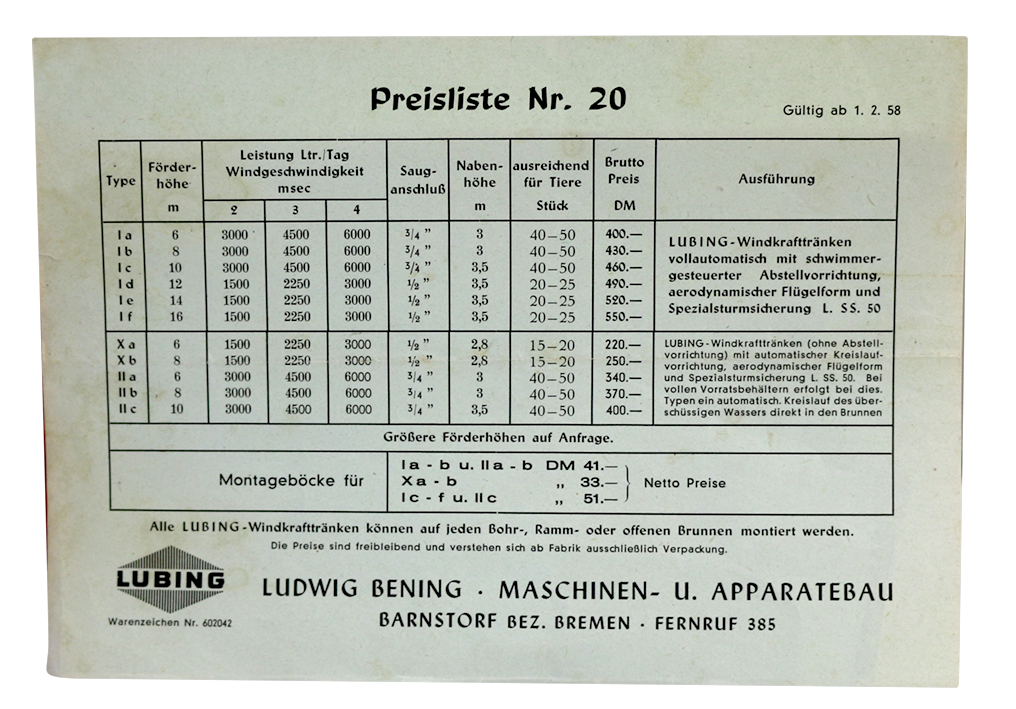
Price list of wind power drinkers from LUBING in 1958
LUBING brochure from the sixties
Part 4: From the wind power pump to the drinking valve
LUBING has found a new topic and starts producing drinking nipples – forerunners of the 4001 and 6001 articles still available today. In the meantime, the wind power pumps and systems, which can both pump water and generate electricity, have made a worldwide triumphal march and are exported to Sweden, France and even South America. At the beginning of the 1960s, Ludwig Bening travels to the distant continent himself to establish new business relationships and maintain existing ones. He was fascinated by the exoticism and the opportunities on site – the foundations for the company’s global presence and expansion also stemmed from the company founder’s enthusiasm.
The now 47-year-old company boss is politically active in his constituency of Diepholz and is a candidate of the liberal party for the district and local elections. On election day, September 28, 1968, it happens: On a cross-country journey, he tries to avoid a cyclist, veers off the road and has a serious accident. Ludwig Bening died in the ambulance on the way to Diepholz district hospital.
A shock, especially for the family – but also for the almost 20-year-old company. Ludwig Bening’s wife Bertl Bening continues to run the business herself for the time being and suggests to Egon Schumacher, who has returned after 18 months of military service, that he should manage the company as the new authorized signatory and managing director…
Iconic product: The first drinking nipple with its positioning in the drinking tube. Even then, the company name was stamped as a trademark.



